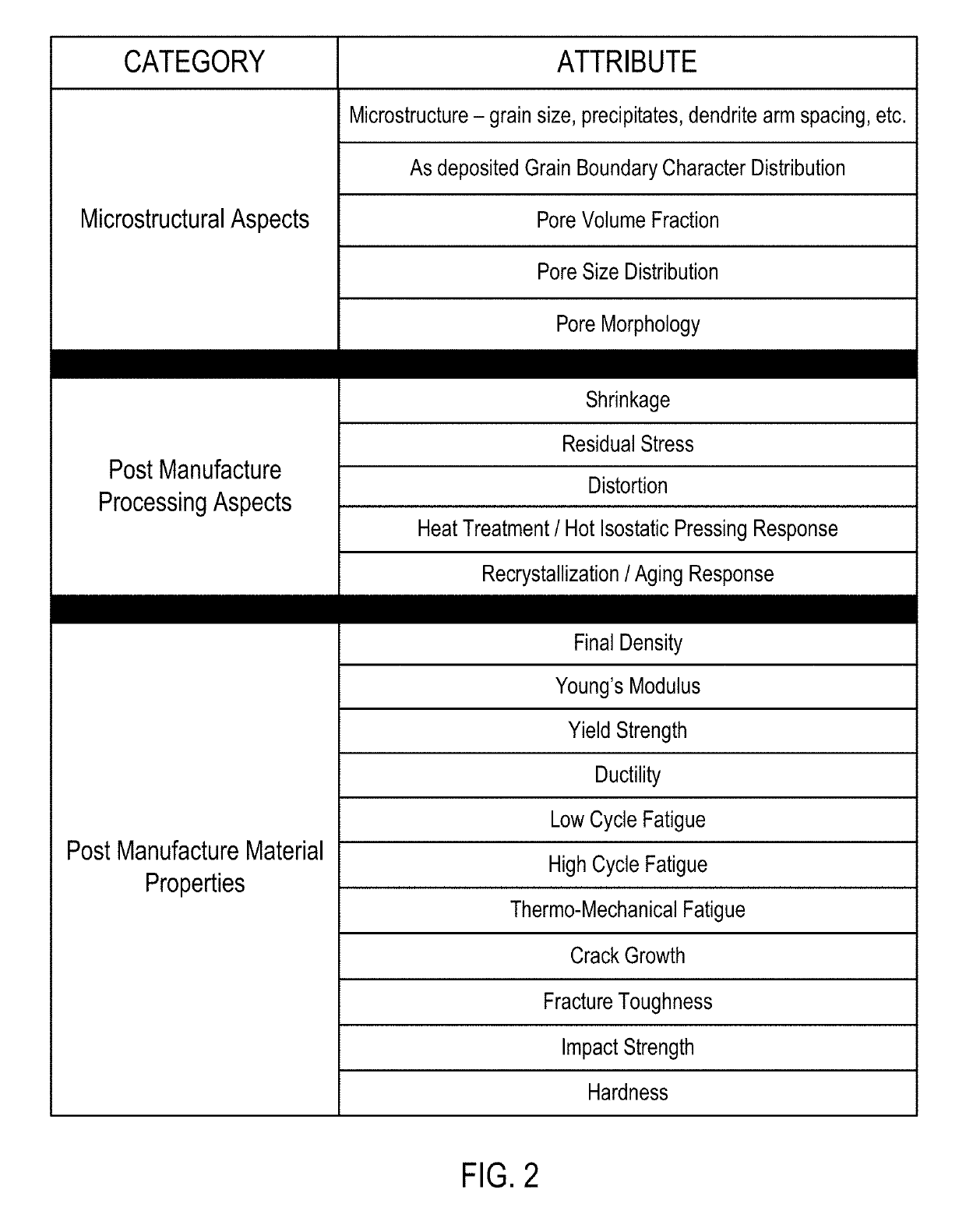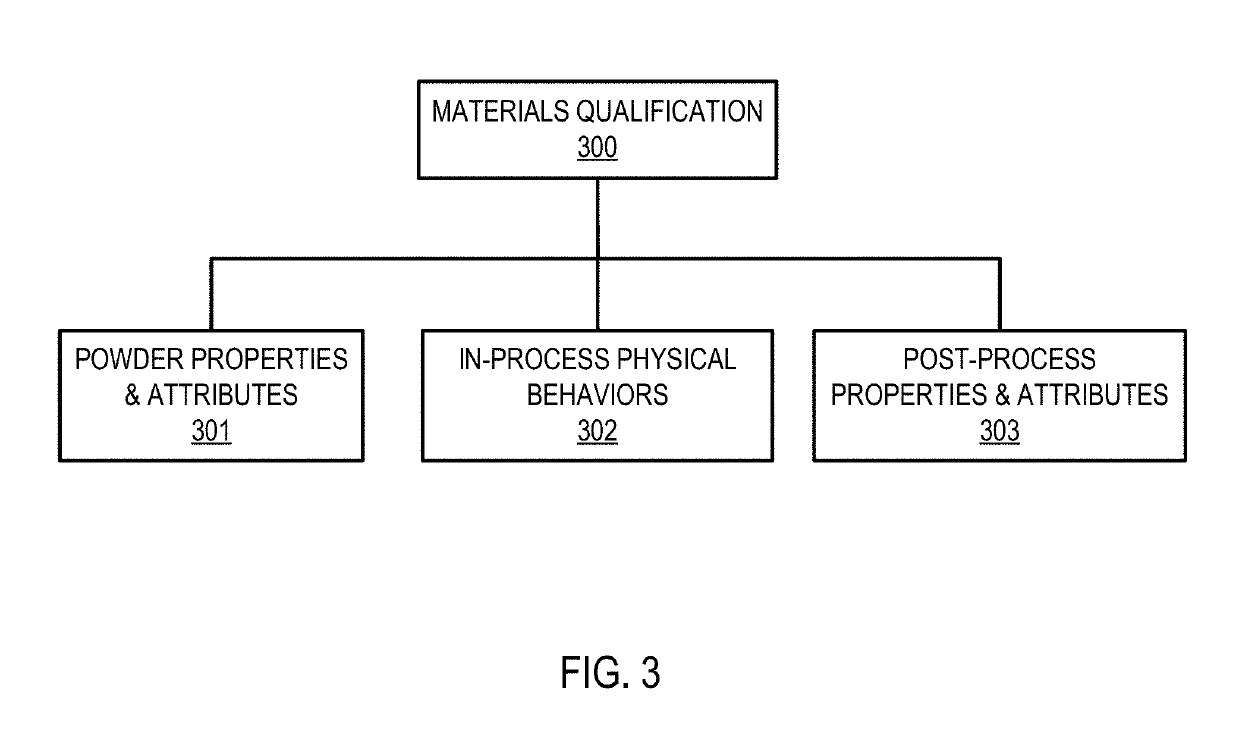Material qualification system and methodology
a material qualification and material technology, applied in the field of material qualification system and methodology, can solve problems such as process disruption
- Summary
- Abstract
- Description
- Claims
- Application Information
AI Technical Summary
Benefits of technology
Problems solved by technology
Method used
Image
Examples
Embodiment Construction
[0035]Additive manufacturing, when performed using a concentrated moving heat source that impinges upon a powder bed, depends on a multitude of attributes and properties that are associated with the powder material itself.
[0036]FIG. 1 shows a table enumerating some examples of various material attributes and properties that can impact quality of a part produced by an additive manufacturing process. It is seen that many parameters can have a significant impact on the powder sintering process, and that equivalence of powders is a multi-dimensional, multi-parameter problem. A combination of powder properties, thermophysical properties, and optical properties must be carefully matched to ensure equivalent outcomes. It is instructive to focus on the post-process aspects of the powder sintering process. Equivalence of results or outcome of the Additive Manufacturing process is another key aspect of establishing equivalence of different materials at the input end.
[0037]In particular, powde...
PUM
| Property | Measurement | Unit |
|---|---|---|
| Particle size distribution | aaaaa | aaaaa |
| Particle size distribution | aaaaa | aaaaa |
| Particle size distribution | aaaaa | aaaaa |
Abstract
Description
Claims
Application Information
 Login to View More
Login to View More - R&D
- Intellectual Property
- Life Sciences
- Materials
- Tech Scout
- Unparalleled Data Quality
- Higher Quality Content
- 60% Fewer Hallucinations
Browse by: Latest US Patents, China's latest patents, Technical Efficacy Thesaurus, Application Domain, Technology Topic, Popular Technical Reports.
© 2025 PatSnap. All rights reserved.Legal|Privacy policy|Modern Slavery Act Transparency Statement|Sitemap|About US| Contact US: help@patsnap.com



